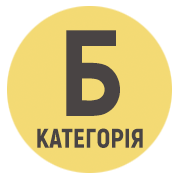THE USSR’S AFGHAN WAR (1979–1989) IN SOVIET FEATURE CINEMA IN THE “VISUAL HISTORY” CONTEXT
DOI:
https://doi.org/10.32782/cusu-hist-2024-2-4Keywords:
Afghan war, “new historу” “visual history”, cinematography, content analysis, feature filmsAbstract
An attempt of feature films’ content analysis devoted to the Afghan war of the USSR (1979–1989) using the methodological tools of “visual history” has been carried out in the article. Ten films created in the USSR during 1983–1991 served as the source base of the research. It has been proven that the cinematic version of the Afghan war (1979–1989), created in the USSR, fully corresponded to the trends of its coverage in the official mass media, scientific and popular science literature, and journalism. It is possible to trace the image evolution of the USSR’s participation in the Afghan crisis from an “unknown war” through a “heroic war” to an “unnecessary” and “criminal” war. This was due to changes in socio-political attitudes in the USSR under the influence of “perestroika” and partial “glasnost”, demythologizing of the Soviet past and reality, as well as the political assessment of the Afghanistan armed invasion in December 1979 by the Second Congress of People's Deputies of the USSR. Feature films about Afghanistan were an important means of reassessment of values and self-discovery for Soviet society. The content analysis of feature films shot in the USSR in 1983– 1991 showed that the historical circumstances of the Afghan war were generally adequately portrayed on the screen. Despite the significant ideological and administrative control over an art by the Soviet authorities, the authors of feature films not only recreated the tragedy and cruelty of that war, but also drew the viewer’s attention to the complex socio-political and moral-ideological problems of the USSR and late Soviet society. Most of the films were anti-war, and their critical and revealing content strengthened the negative attitude of society towards the Afghan war and the policy of the Kremlin leadership. This, in turn, undermined the authority of the communist government and was a significant factor in the crisis of the Soviet socio-political system, which ultimately led to the collapse of the Soviet Union.
References
Бычков С. П., 2003. Особенности исторического фильма: взгляд с точки зрения исторической науки. Вестник Омского университета. № 4. Омск. 55–58.
Волков Е. В., 2012. Пономарева Е. В. Игровое кино как исторический источник для изучения культурной памяти. Вестник ЮУрГУ. № 10 (262). Ч. 22–26.
Гай Д., 1991. Снегирев В. Вторжение. Неизвестные страницы необъявленной войны. Москва.
Ґаскелл А., 2013. Візуальна історія. В: Берк П. (ред.) Нові підходи до історіописання. Київ: Ніка-центр. 221–256.
Грей Г., 2014. Кино: Визуальная антропология. Москва.
Иваненко А. И., 2020. Шурави и душман в пространстве отечественной кинорефлексии. Вестник Северного (Арктического) федерального университета. Серия: Гуманитарные и социальные науки. № 3. А. 48–59.
Ковалевська О., 2016. Візуальні студії в системі сучасного соціогуманітарного знання. Історіографічні дослідження в Україні: Зб. наук. праць. Вип. 26. Київ. 208–237.
Ковальков О. Л., 2020. Висвітлення воєнних дій СРСР у Демократичній республіці Афганістан у радянській науковій, науково-популярній літературі та публіцистиці. Вісник Черкаського університету. Серія: Історичні науки. № 2. Черкаси. 92–112.
Костыря А. А., 2009. Историография, источниковедение, библиография спецоперации СССР в Афганистане (1979–1989 гг.). Донецк.
Кохан Т. Г., 2017. Кінематограф у контексті культурного простору ХХ століття. Київ.
Ляховский А. А., 1995. Трагедия и доблесть Афгана. Москва.
Ляховский А. А., 1991. Забродин В. М. Тайны афганской войны. Москва.
Рабенчук О., 2012. До питання про візуальне як джерело історичних досліджень. Україна ХХ ст.: культура, ідеологія, політика. № 17. Київ. 29–39.
Танис К. А., 2019. Кино и зритель в эпоху перестройки: изменение горизонта зрительских ожиданий в 1980–1990-е годы. Вестник Пермского университета. Серия: История. Вып. 3 (46). Москва. 26–33. Ферро М., 1993. Кино и история. Вопросы истории. № 2. С. 47–57.
Щербакова Е. И., 2011. Визуальная история: освоение нового пространства. В: Бордюгов Г. А. (ред.) Исторические исследования в России – ІІІ. Пятнадцать лет спустя. М.: АИРО ХХІ. 473–488.
Potzch M., 2018, Of Monsters and Men: Forms of Evil in War Films. In: Löschnigg M. and Sokołowska-Paryż M. The Enemy in Contemporary Film (Culture & Conflict. Vol. 12). Berlin; Boston. 53–73. URL: https://library.oapen.org/viewer/web/viewer.html?file=/ bitstream/handle/20.500.12657/51197/external_content.pdf?sequence=1&isAllowed=y [18. 01. 2023].
Rosenstone R. A., 1995. The Historical Film as Real History. Filmhistoria Online. Vol. 5. № 1. Barcelona. 5–23. URL: [18. 01. 2023].
Salmi H., 1995. Film as Historical Narrative. Filmhistoria Online. Vol. 5. №1. Barcelona. 45–54. URL: filmhistoria/issue/view/1127 [18. 01. 2023].








